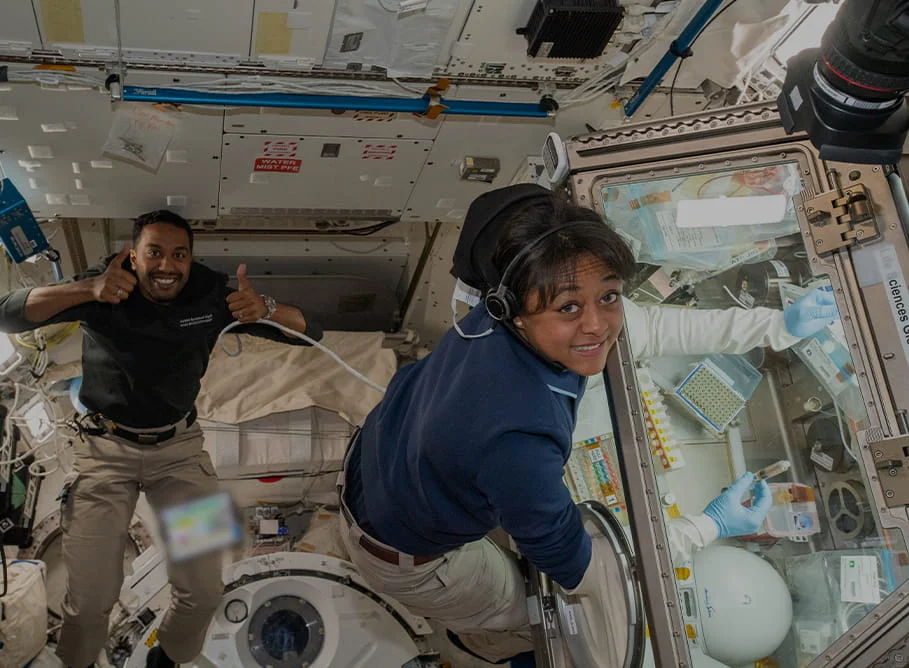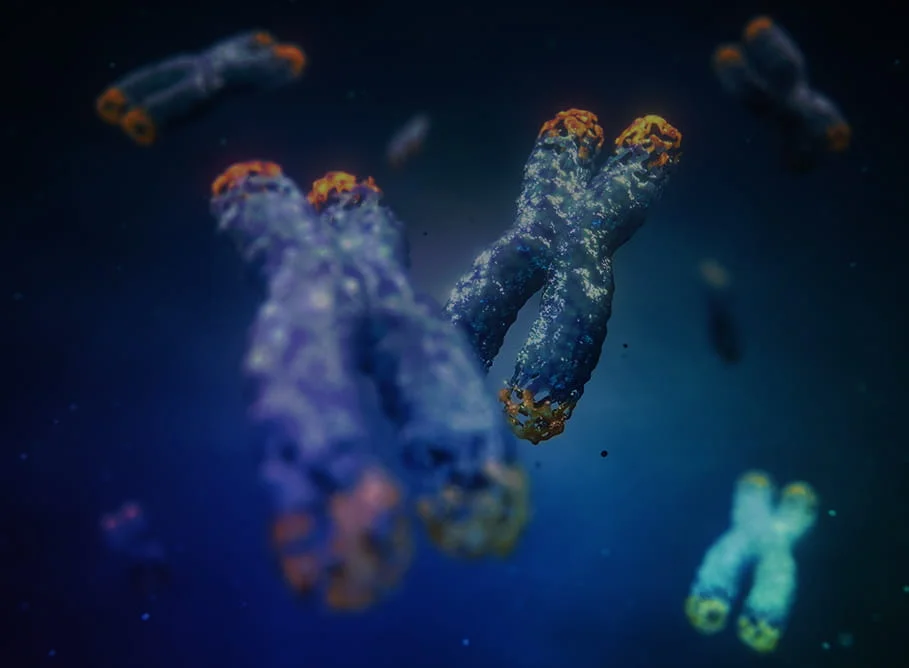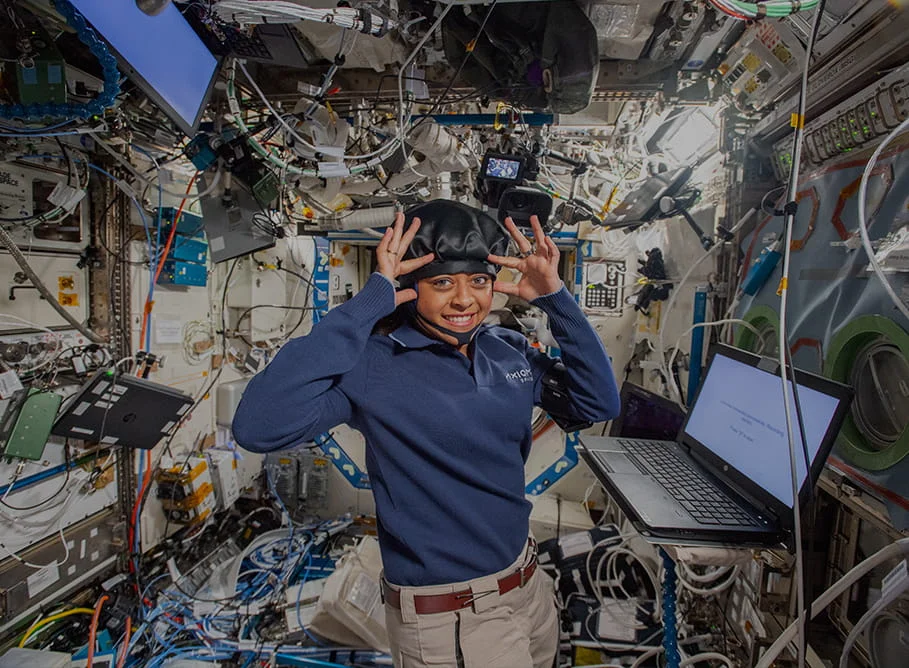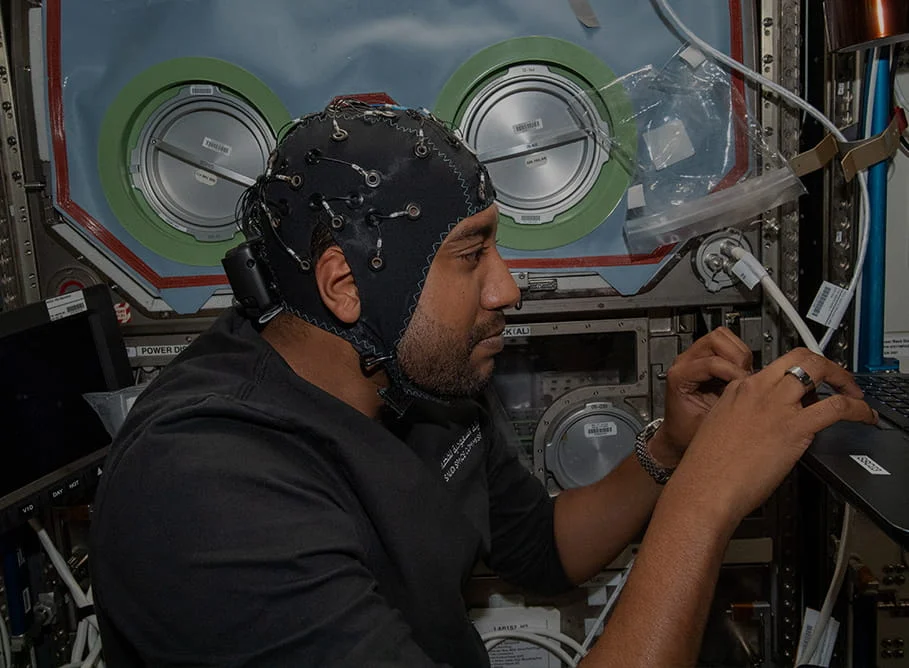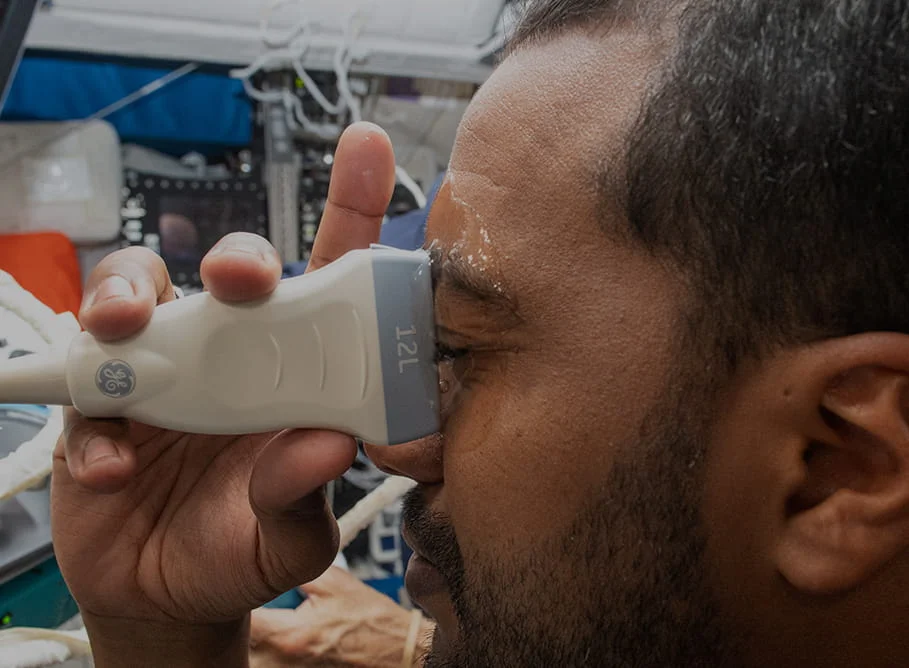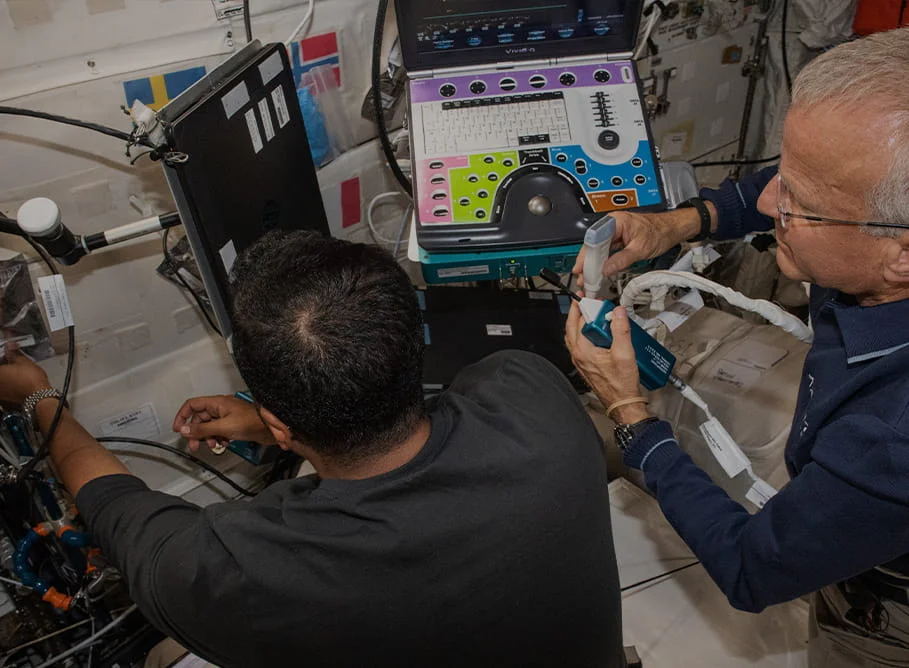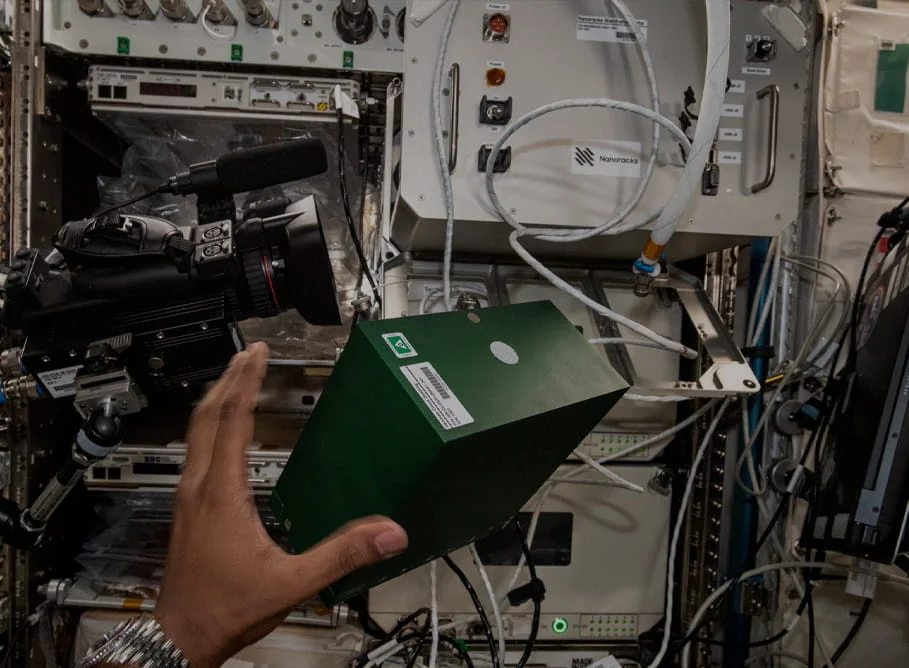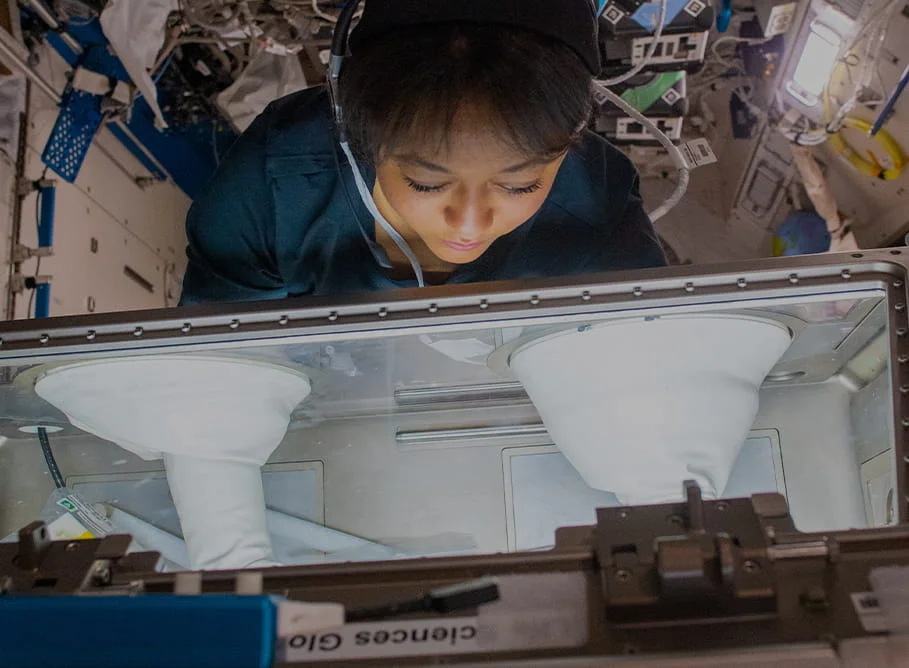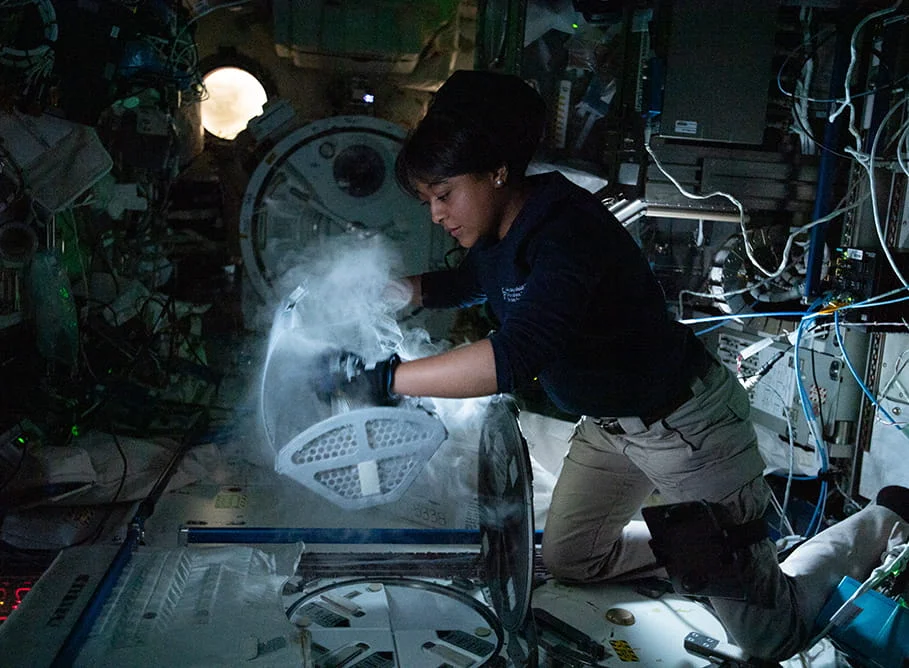HUMAN SPACE FLIGHT PROGRAM
SSA-HSF1 Official Patch
The Official Patch of the kingdom’s scientific mission to the international space station (ISS) embodies its future aspirations.

The round shape
inspired by the famous window of the ISS, which reflects cooperation and communication between nations in space exploration.
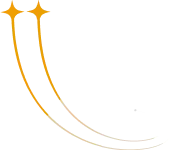
Two Rising Stars
Representing the two Saudi astronauts, their ambitions, and aspirations towards progress and achievement.

14 Stars
Representing the number of experiments that the Saudi astronauts will conduct during their journey to be a symbol of progress in the nation’s skies.

Lunching year
2023 indicates the year the Kingdom launched into space and the beginning of its journey in space exploration and achieving its scientific and technological aspirations.

KSA Flag
Emphasizes national identity and belonging to the homeland.
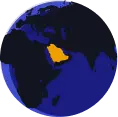
KSA on the World Map
The globe was drawn including details of KSA map, which shows the scientific development in the Kingdom at the global level.

Astronaut
Looking at Earth symbolizes the primary goal of the mission, which is to serve humanity and improve the quality of life on planet Earth.

Vision 2030 logo
Reflects the Kingdom’s role in promoting the development of science, research, and innovation.
Hover to explore logo info
Space Mission Information
SSA-HSF1 Scientific Experiments
Our Astronauts
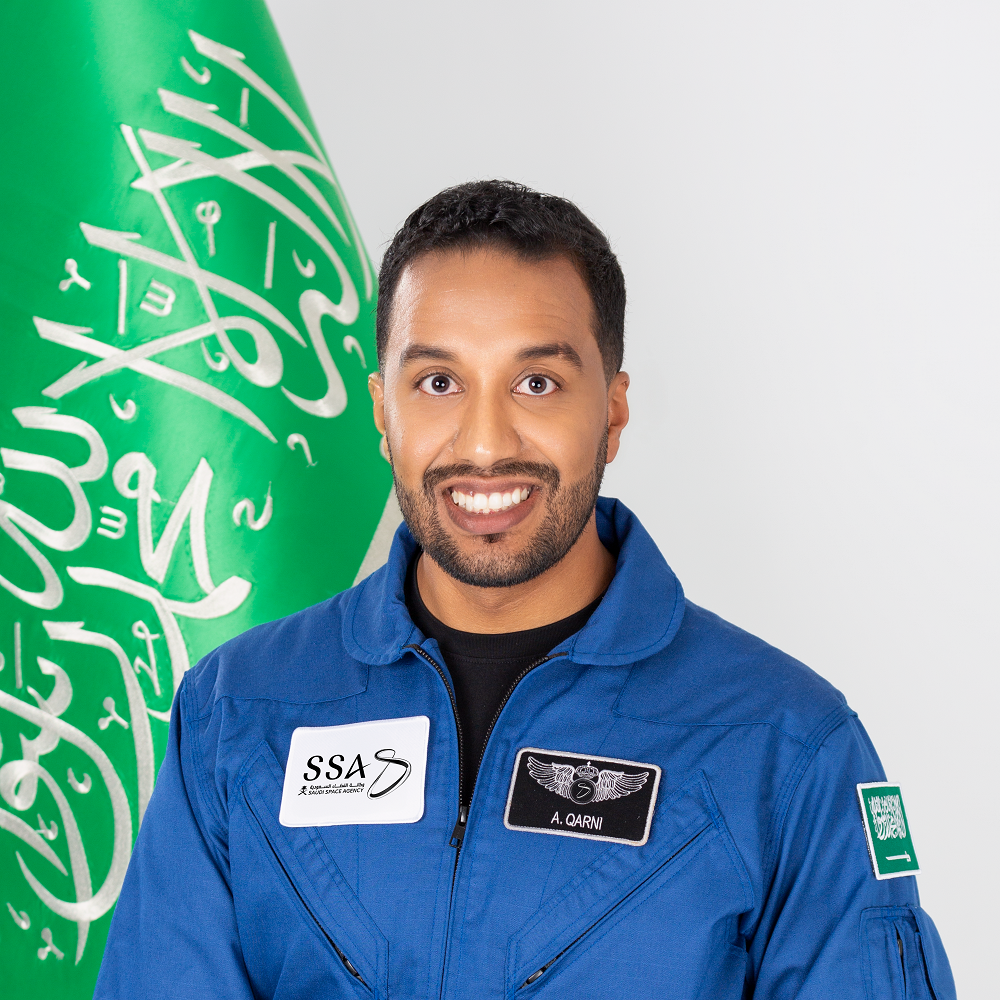
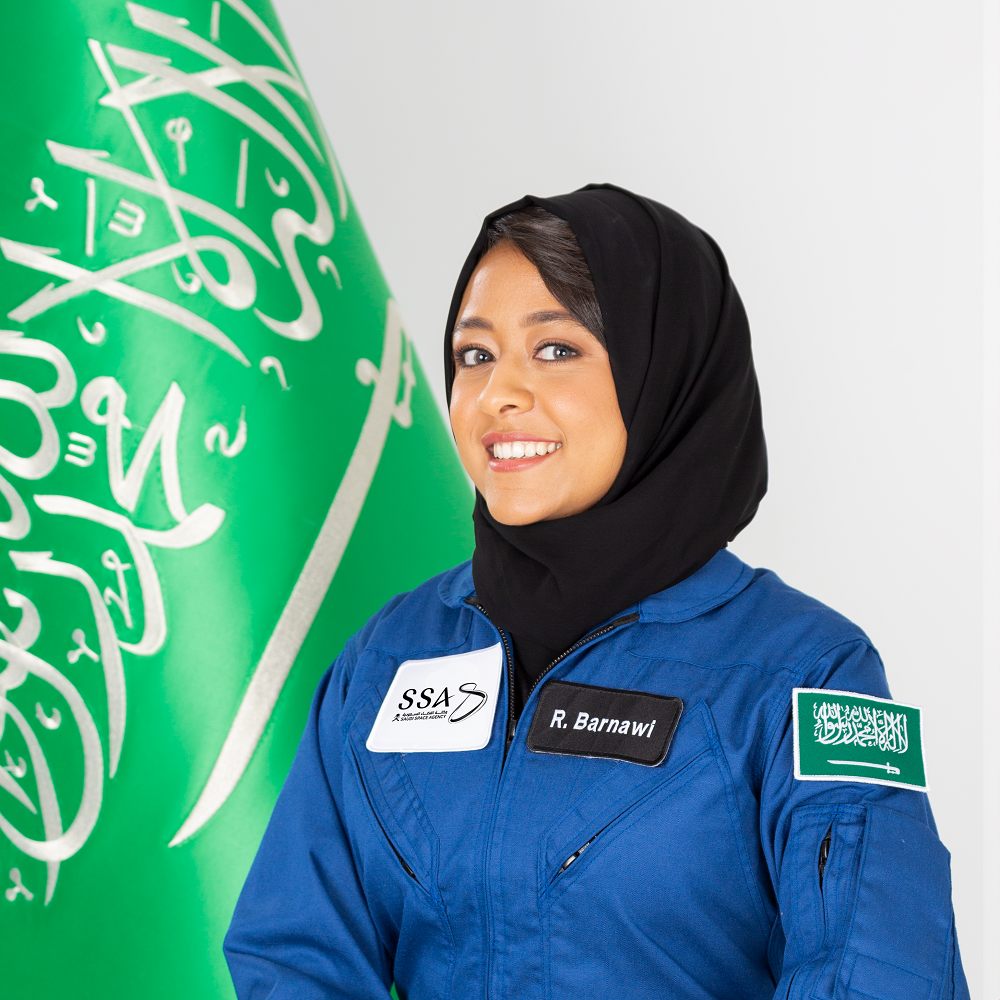
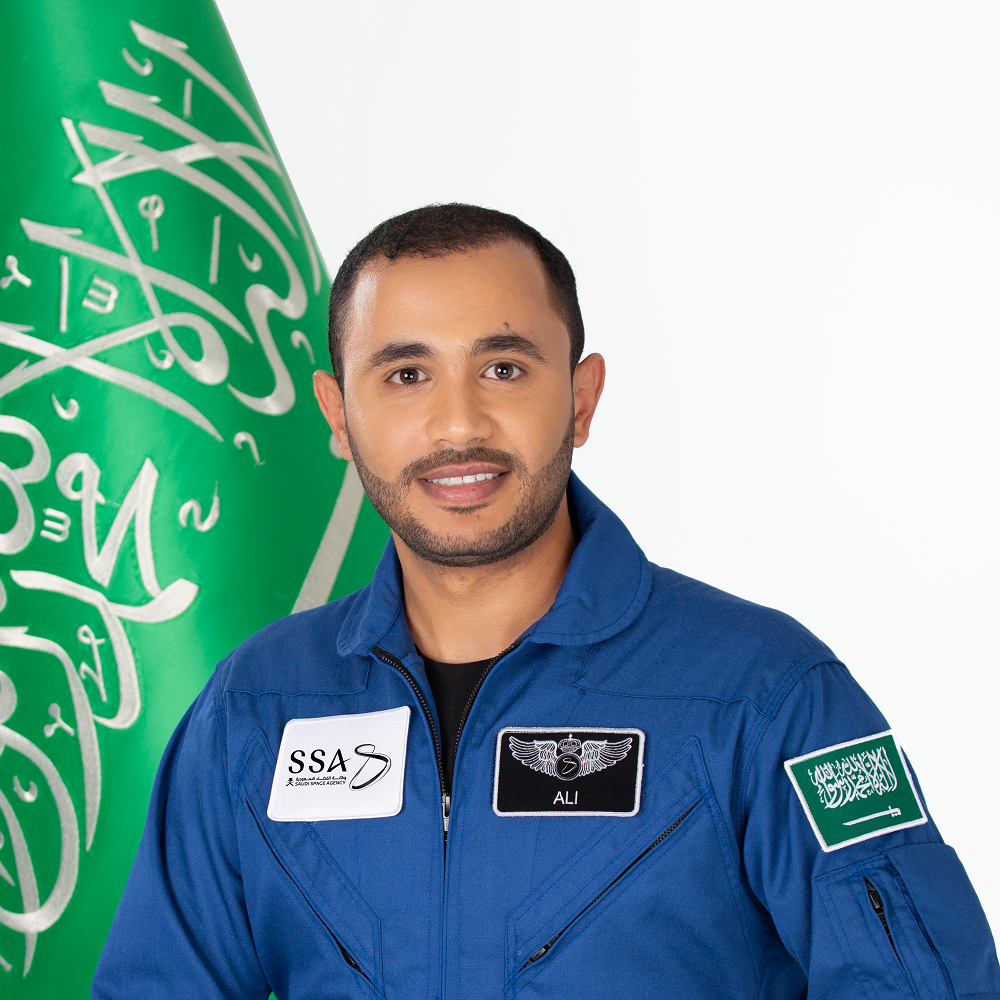
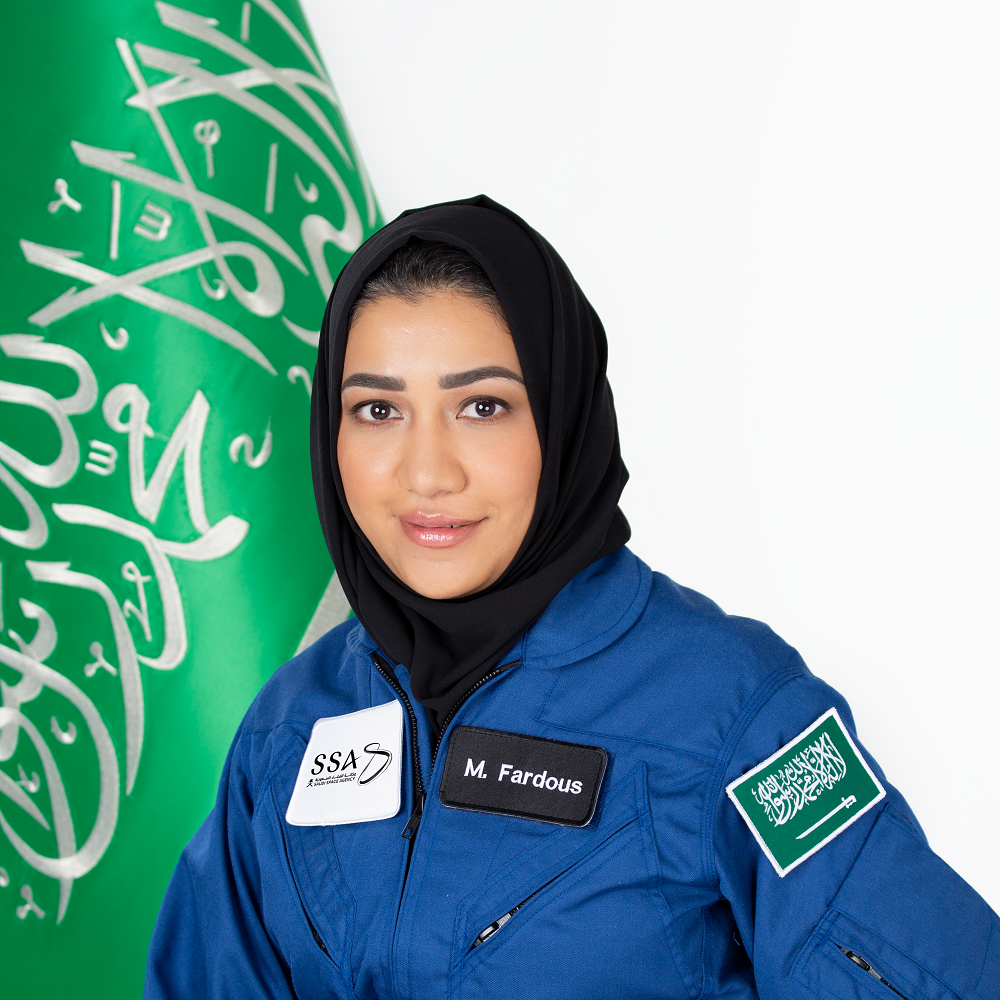
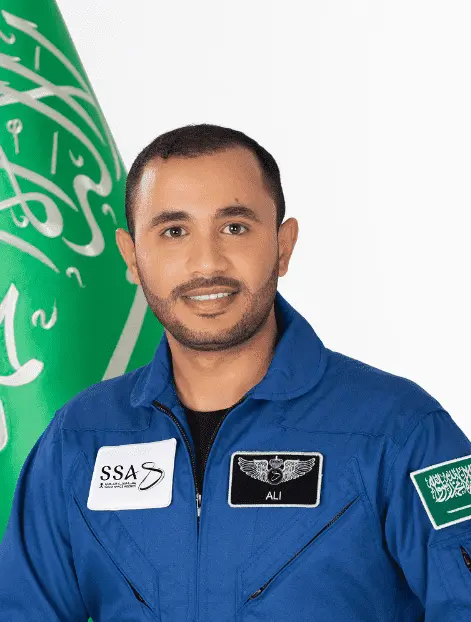
Ali Al-Ghamdi
A Saudi astronaut and pilot, Ali has completed astronaut training programs, qualifying him for future space missions.
With over 11 years of experience in jet aviation, he has participated in numerous airshows.
Driven by his passion for flying, Ali is a strong advocate for space exploration and aims to inspire more Saudi youth to go beyond the boundaries of our planet.
He firmly believes that discipline is the key to success; while passion may mark the beginning of a journey, discipline ensures reaching the finish line.
Place of Birth: Baljurashi, Saudi Arabia.
Education: Bachelor’s Degree in Aeronautical Science.
Previous Profession: Captain Pilot.
Languages: Arabic, English, French, Spanish.
Hobbies: Football, swimming, chess, tennis, drawing, and reading.
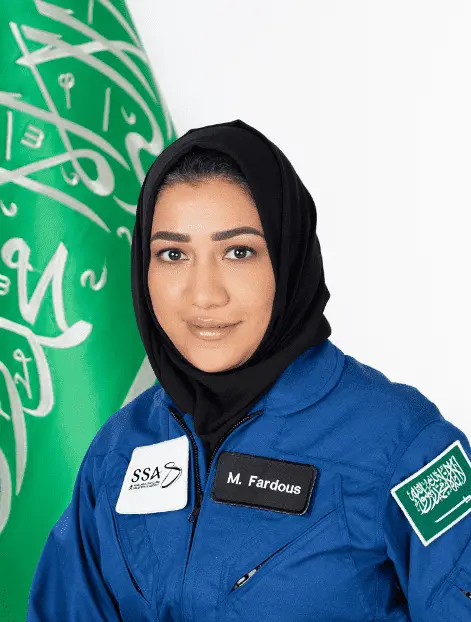
Mariam Fardous
A Saudi astronaut driven by her passion for science and exploration, Mariam aspires to inspire future generations to pursue their dreams and push the boundaries of what’s possible to serve humanity and improve quality of life.
She has completed astronaut training programs and is qualified to participate in future space missions. With over 13 years of experience in the medical field, Mariam possesses diverse practical skills.
Place of Birth: Makkah, Saudi Arabia.
Education: Master’s Degree in Epidemiology and Biostatistics.
Previous Profession: Medical Doctor.
Languages: Arabic, English, French.
Hobbies: Storytelling, mountain climbing, diving, paragliding, and volunteering.
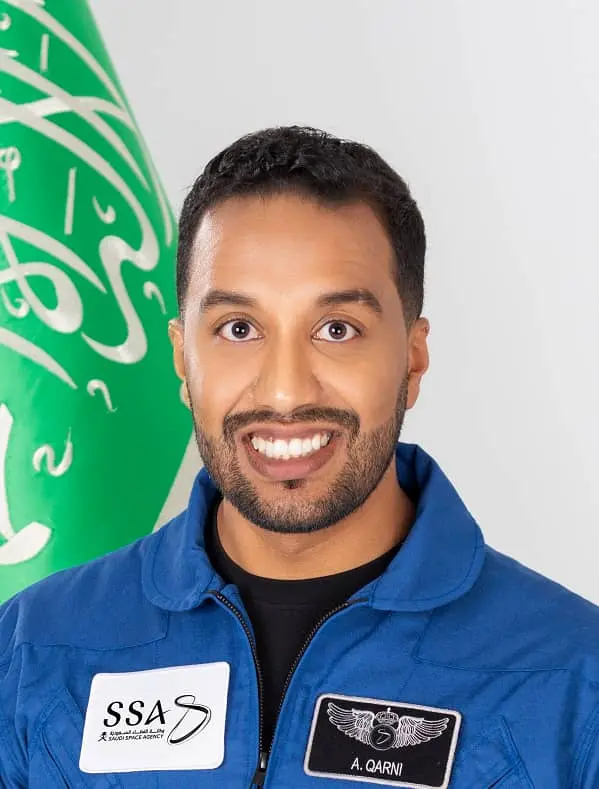
Ali Al-Qarni
A Saudi astronaut and experienced pilot, Ali was part of the SSA-HSF1 mission crew that traveled to the International Space Station.
With over 12 years of experience flying F-15SA aircraft, Ali’s rigorous training, exceptional skill, and ability to execute tasks flawlessly have equipped him to conduct scientific experiments with high efficiency and precision, adhering to the required standards.
Place of Birth: Sabt Al-Alaya, Saudi Arabia.
Education: Bachelor’s Degree in Aeronautical Science.
Previous Profession: Fighter Pilot.
Languages: Arabic, English.
Hobbies: Collecting watches, diving, paragliding, sports, and a passion for learning
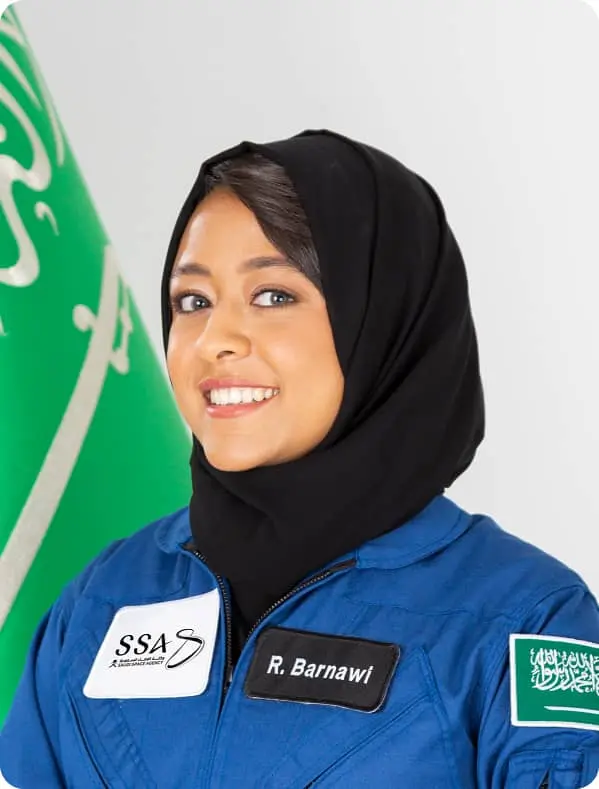
Rayyanah Barnawi
The first Saudi female astronaut and a crew member of the SSA-HSF1 mission to the International Space Station. Rayyanah brings over 9 years of experience in stem cell and tissue re-engineering.
Known for her passion and love for exploring new horizons, she has dedicated her professional career to enhancing scientific research protocols.
This passion led her to embark on conducting scientific experiments in a microgravity environment to serve her nation and humanity.
Place of Birth: Jeddah, Saudi Arabia.
Education: Master’s Degree in Biomedical Sciences.
Previous Profession: Research Scientist and Laboratory Specialist.
Languages: Arabic, English, Turkish, French, German.
Hobbies: Traveling, swimming, learning languages, and exploring world cultures.
MISSION MEDIA
KNOW MORE
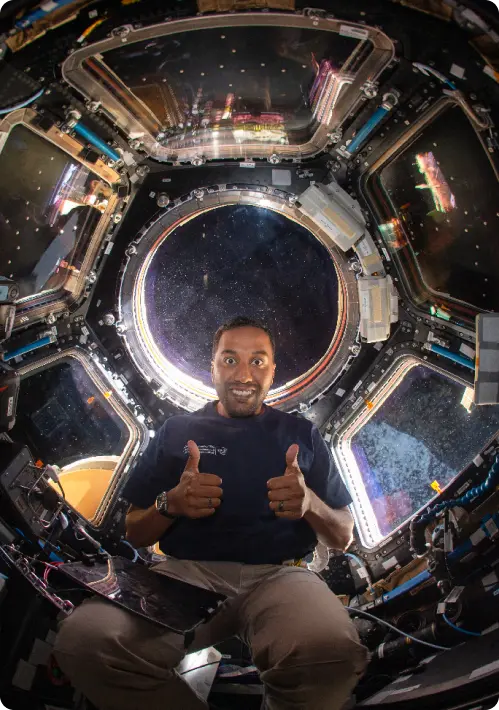
Why Has The Kingdom Chosen Scientific Missions?
To Qualify Cadres At The Highest Level To Support The Objectives Of The National Space Strategy And The Ability To Conduct Their Research Independently In The Microgravity Environment And The Space Environment In General.
What Is The International Space Station?
- Established In 1998
- Established By (5) Space Agencies
- It Is A Space Research Centre, And Nearly 3,000 Experiments Have Been Conducted
- Its Length Is 109 M Wide (73 M) With A Weight Of Approximately 500 Tons
- Orbiting At An Altitude Of Approximately 420 Km From The Earth's Surface
- Manned By Astronauts Since 2000
- Complete One Cycle Around The Earth In Every 90 Minutes And Speed (28,000 Km/H)
- The Plant Uses Solar Power To Generate The Power Needed For Its Operation
What Are The Types Of Flights For ISS In Terms Of Duration?
Short Trips (Up To 30 Days): Scientific Tasks Are Carried Out In Accordance With Available Duration.
Long Journeys (Up To 180 Days): Involves Detailed Scientific Research And Requires Long-Term Follow-Up And Analysis, As Well As Maintenance And Development Tasks For Some Payloads Outside The Station.
What Are The Most Prominent Inventions From Space Research?
Insulin Pump - Fire Fighting Equipment - LASIK - Wireless Speakers - Water Purification System
How Long Is The SSA-HSF1 'S Scientific Mission?
Duration (8) Days, Launched On May 21, 2023.
Partners
Future Partner
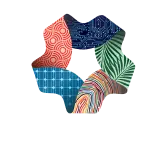
Strategic Partner





